Advocate Cat Spot On, POM-V
Product Description
Target species
Cats and ferrets
Indications for use, specifying the target species
For cats suffering from, or at risk from, mixed parasitic infections. The veterinary medicinal product is only indicated when use against fleas and one or more of the other target parasites is indicated at the same time.
- the treatment and prevention of flea infestation (Ctenocephalides felis),
- the treatment of ear mite infestation (Otodectes cynotis),
- the treatment of notoedric mange (Notoedres cati)? the treatment of the lungworm Eucoleus aerophilus (syn. Capillaria aerophila) (adults),
- the prevention of lungworm disease (L3/L4 larvae of Aelurostrongylus abstrusus),
- the treatment of the lungworm Aelurostrongylus abstrusus (adults),· the treatment of the lungworm Troglostrongylus brevior (adults),
- the treatment of the eye worm Thelazia callipaeda (adults),
- the prevention of heartworm disease (L3 and L4 larvae of Dirofilaria immitis),
- the treatment of infections with gastrointestinal nematodes (L4 larvae, immature adults and adults of Toxocara cati and Ancylostoma tubaeforme).
The product can be used as part of a treatment strategy for flea allergy dermatitis (FAD).
For ferrets suffering from, or at risk from, mixed parasitic infections. The veterinary medicinal product is only indicated when use against fleas and the prevention of heartworm disease is indicated at the same time.
? the treatment and prevention of flea infestation (Ctenocephalides felis),
? the prevention of heartworm disease (L3 and L4 larvae of Dirofilaria immitis).
Contraindications
Do not use in kittens under 9 weeks of age.
Do not use in cases of hypersensitivity to the active substances or to any of the excipients.
For ferrets: Do not use Advocate for large cats (0.8 ml) or Advocate for dogs (any size).
Do not use in dogs. Instead the corresponding “Advocate for dog” product, which contains 100 mg/ml imidacloprid and 25 mg/ml moxidectin, must be used for dogs.
Do not use on canaries.
Special warnings for each target species
The veterinary medicinal product’s efficacy has not been tested in ferrets weighing over 2 kg and therefore the duration of effect might be shorter in these animals.
Brief contact of the animal with water on one or two occasions between monthly treatments is unlikely to significantly reduce the efficacy of the veterinary medicinal product. However, frequent shampooing or immersion of the animal in water after treatment may reduce the efficacy of the veterinary medicinal product.
The possibility that other animals in the same household can be a source of re-infection with fleas, mites, gastrointestinal nematodes, heartworm and/or lungworm should be considered, and these should be treated as necessary with an appropriate product.
Unnecessary use of antiparasitics or use deviating from the instructions given in the SPC may increase the resistance selection pressure and lead to reduced efficacy. The decision to use the product should be based on confirmation of the parasitic species and burden, or of the risk of infestation based on its epidemiological features, for each individual animal.
Special precautions for use
Special precautions for use in animals
The treatment of cats weighing less than 1 kg and ferrets weighing less than 0.8 kg should be based on a benefit-risk assessment.
There is limited experience on the use of the product in sick and debilitated animals, thus the product should only be used based on a benefit-risk assessment for these animals.
Do not apply in the mouth, in the eyes or the ears of the animal.
Care should be taken that the product is not ingested by animals and does not come into contact with the eyes or mouth of the recipient and/or other animals.
Consider carefully the correct application method described in section 43.9, especially that the veterinary medicinal product should be applied to the site specified in order to minimise the risk for the animal to lick the veterinary medicinal product.
Do not allow recently treated animals to groom each other. Do not allow treated animals to come into contact with untreated animals until the application site is dry.
It is recommended that cats and ferrets living in, or travelling to areas endemic for heartworm are treated monthly with the product to protect them from heartworm disease.
Whilst the accuracy of diagnosis of heartworm infection is limited, it is recommended that attempts be made to check the heartworm status of any cat and ferret aged over 6 months, before beginning prophylactic treatment, as use of the product on cats or ferrets which have adult heartworms may cause serious adverse effects, including death. If adult heartworm infection is diagnosed, the infection should be treated in accordance with current scientific knowledge.
In certain individual cats Notoedres cati infestation may be severe. In these severe cases concomitant supportive treatment is necessary as treatment with the product alone may not be sufficient to prevent death of the animal.
The safety of the product has not been established in cats with severe clinical signs of T. brevior. Use of the product in such cases should be based on the benefit-risk assessment of the veterinarian.
Imidacloprid is toxic for birds, especially canaries.
Special precautions to be taken by the person administering the veterinary medicinal product to animals
This veterinary medicinal product can cause skin, eye, or mouth irritation.
In very rare cases the veterinary medicinal product may cause skin sensitisation or transient skin reactions (for example numbness, irritation or burning/tingling sensation).
In very rare cases the veterinary medicinal product may cause respiratory irritation in sensitive individuals.
People with known hypersensitivity to benzyl alcohol, imidacloprid or moxidectin should administer the veterinary medicinal product with caution.
Avoid contact with skin, eyes or mouth.
Do not eat, drink or smoke during application.
Wash hands thoroughly after use.
After application do not stroke or groom animals until the application site is dry.
In case of accidental spillage onto skin, wash off immediately with soap and water.
If the veterinary medicinal product accidentally gets into eyes, they should be thoroughly flushed with water.
If skin or eye symptoms persist, or the product is accidentally swallowed, seek medical advice immediately and show the package leaflet or the label to the physician.
Special precautions for the protection of the environment:
The veterinary medicinal product should not enter water courses as imidacloprid and moxidectin may be dangerous for fish and other aquatic organisms.
Other precautions:
The solvent in the veterinary medicinal product may stain or damage certain materials including leather, fabrics, plastics and finished surfaces. Allow the application site to dry before permitting contact with such materials.
Adverse reactions (frequency and seriousness)
Cats and ferrets
|
Rare (1 to 10 animals / 10,000 animals treated): |
Application site greasy fur1 Vomiting1 Hypersensitivity reaction (local) Erythema1 |
|
Very rare (<1 animal / 10,000 animals treated, including isolated reports): |
Behavioral disorder (e.g. agitation)2,4 Hypersalivation3,4 Neurological signs3 Pruritis5 Inappetence4,2, Lethargy4,2 |
1 These signs disappear without further treatment.
2 Transiently noted and related to sensation at application site.
3 If the animal licks the application site, in most cases transient.
4 This is not a sign of intoxication and disappears within minutes without treatment. Correct application will minimise licking of the application site.
5 In cats, transient.
Reporting adverse events is important. It allows continuous safety monitoring of a veterinary medicinal product. Reports should be sent, preferably via a veterinarian, to either the marketing authorisation holder or its local representative or the national competent authority via the national reporting system. See the package leaflet for respective contact details.
Use during pregnancy, lactation or lay
The safety of the veterinary medicinal product has not been established during pregnancy and lactation in the target species.
Pregnancy and lactation:
The use is not recommended during pregnancy and lactation.
Fertility:
Do not use in breeding animals.
Interaction with other medicinal products and other forms of interaction
During treatment with Advocate no other antiparasitic macrocyclic lactone should be administered.
No interactions between Advocate and routinely used veterinary medicinal products or medical or surgical procedures have been observed.
Amounts to be administered and administration route
To ensure a correct dosage, body weight should be determined as accurately as possible.
Dosage schedule for cats:
The recommended minimum doses are 10 mg/kg bodyweight imidacloprid and 1.0 mg/kg bodyweight moxidectin, equivalent to 0.1 ml/kg bodyweight Advocate for cats.
For treatment or prevention of infestations with the parasites indicated for use of this veterinary medicinal product, the need for and frequency of re-treatment(s) should be based on professional advice and should take into account the local epidemiological situation and the animal’s lifestyle.
|
Weight of cat (kg) |
Pipette size to be used |
Volume (ml) |
Imidacloprid (mg/kg bw) |
Moxidectin (mg/kg bw) |
|
4 kg or less |
Advocate for small cats |
0.4 |
minimum of 10 |
minimum of 1 |
|
> 4–8 kg |
Advocate for large cats |
0.8 |
10 - 20 |
1 - 2 |
|
> 8 kg |
the appropriate combination of pipettes |
|||
Flea treatment and prevention (Ctenocephalides felis)
One treatment prevents future flea infestation for 4 weeks. Existing pupae in the environment may emerge for 6 weeks or longer after treatment is initiated, depending upon climatic conditions. Therefore, it may be necessary to combine Advocate treatment with environmental treatments aimed at breaking the flea life cycle in the surroundings. This can result in a more rapid reduction in the household flea population. The product should be administered at monthly intervals when used as part of a treatment strategy for flea allergy dermatitis.
Treatment of ear mite infestation (Otodectes cynotis)
A single dose of the product should be administered. A further veterinary examination 30 days after treatment is recommended as some animals may require a second treatment. Do not apply directly to the ear canal.
Treatment of notoedric mange (Notoedres cati)
A single dose of the product should be administered.
Treatment of the lungworm Eucoleus aerophilus (syn. Capillaria aerophila) (adults)
A single dose of the product should be administered.
Prevention of Aelurostrongylus abstrusus
The product should be administered monthly.
Treatment of Aelurostrongylus abstrusus
Advocate should be administered monthly for three consecutive months.
Treatment of Troglostrongylus brevior (adults)
Advocate should be administered monthly for two consecutive months.
Treatment of the eye worm Thelazia callipaeda (adults)
A single dose of the product should be administered.
Heartworm prevention (Dirofilaria immitis)
Cats in areas endemic for heartworm, or those which have travelled to endemic areas, may be infected with adult heartworms. Therefore prior to treatment with the veterinary medicinal product, the advice provided in section 34.5, should be considered.
For prevention of heartworm disease, the product must be applied at regular monthly intervals during the time of the year when mosquitoes (the intermediate hosts which carry and transmit heartworm larvae) are present. The product may be administered throughout the year. The first dose may be given after first possible exposure to mosquitoes, but not more than one month after this exposure. Treatment should continue at regular monthly intervals until 1 month after the last exposure to mosquitoes. To establish a treatment routine, it is recommended that the same day or date be used each month. When replacing another heartworm preventative product in a heartworm prevention programme, the first treatment with the veterinary medicinal product must be given within 1 month of the last dose of the former veterinary medicinal product.
In non-endemic areas there should be no risk of cats having heartworm. Therefore, they can be treated without special precautions.
Roundworm and hookworm treatment (Toxocara cati and Ancylostoma tubaeforme)
In areas endemic for heartworm, monthly treatment may significantly reduce the risk of re-infection caused by the respective roundworms and hookworms. In areas non-endemic for heartworm, the product can be used as part of a seasonal prevention programme against fleas and gastrointestinal nematodes.
Dosage schedule for ferrets:
One pipette of the veterinary medicinal product (0.4 ml) should be administered per animal. Do not exceed the recommended dose.
For treatment or prevention of infestations with the parasites indicated for use of this veterinary medicinal product, the need for and frequency of re-treatment(s) should be based on professional advice and should take into account the local epidemiological situation and the animal’s lifestyle.
Flea treatment and prevention (Ctenocephalides felis)
One treatment prevents future flea infestation for 3 weeks. Under heavy flea pressure it may be necessary to repeat administration after 2 weeks.
Heartworm prevention (Dirofilaria immitis)
Ferrets in areas endemic for heartworm, or those which have travelled to endemic areas, may be infected with adult heartworms. Therefore prior to treatment with the veterinary medicinal product, the advice provided in section 34.5, should be considered.
For prevention of heartworm disease, the product must be applied at regular monthly intervals during the time of the year when mosquitoes (the intermediate hosts which carry and transmit heartworm larvae) are present. The veterinary medicinal product may be administered throughout the year. The first dose may be given after first possible exposure to mosquitoes, but not more than one month after this exposure. Treatment should continue at regular monthly intervals until 1 month after the last exposure to mosquitoes.
In non-endemic areas there should be no risk of ferrets having heartworm. Therefore, they can be treated without special precautions.
Method of administration
External use.
Remove one pipette from the package. Then hold the pipette in an upright position, and twist and pull off the cap. Reverse the cap and use it to twist and remove the seal from the pipette, as shown.
Part the fur on the animal's neck at the base of the skull until the skin is visible. Place the tip of the pipette on the skin and squeeze the pipette firmly several times to empty its contents directly onto the skin. Application at the base of the skull will minimise the opportunity for the animal to lick the product. Apply only to undamaged skin.
Overdose (symptoms, emergency procedures, antidotes), if necessary
Up to 10 times the recommended dose was tolerated in cats with no evidence of adverse effects or undesirable clinical signs.
The product was administered to kittens at up to 5 times the recommended dose, every 2 weeks for 6 treatments, and there were no serious safety concerns. Transient mydriasis, salivation, vomiting and transient rapid respiration were observed.
After accidental oral ingestion or overdose, neurological signs (most of which are transient) such as ataxia, generalised tremors, ocular signs (dilated pupils, little pupillary reflex, nystagmus), abnormal respiration, salivation and vomiting may occur in very rare cases.
The product was administered to ferrets at 5 times the recommended dose, every 2 weeks for 4 treatments, and there was no evidence of adverse effects or undesirable clinical signs.
In case of accidental oral uptake, symptomatic treatment should be administered. There is no known specific antidote. The use of activated charcoal may be beneficial.
Withdrawal period(s)
Not applicable.
Loyalty Scheme
Earn up to 19 loyalty points with this product.


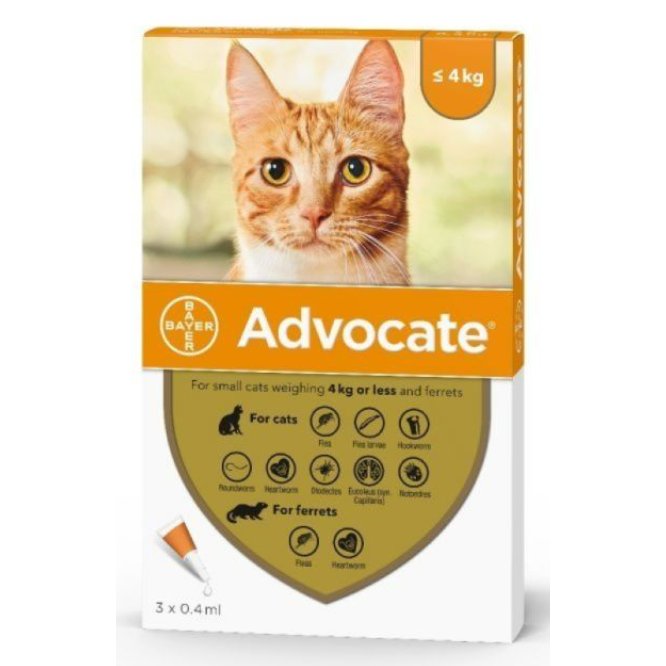






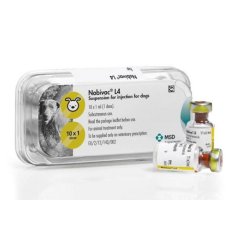
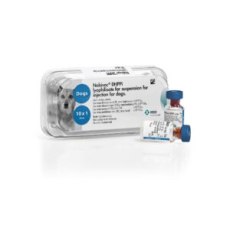
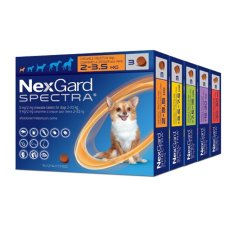
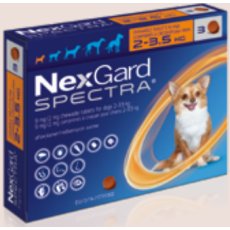





Share
Advocate Cat Spot On, POM-V
Facebook Twitter Email Pinterest Telegram